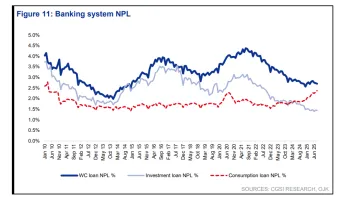How to approach open APIs: Threats and oppotunities
By Eiichiro YanagawaReturning to a global perspective, both US and European open API trends, as well as regulatory and market participant responses, are valuable reference points for Japanese market players looking for insight. While Japan was mulling advancements related to open APIs, we continued to find best practices in each industry including banking, insurance, securities, and wealth management in the pioneering European market and the US market. We also continued to offer strategic advice to financial institutions engaging in individual projects and technology vendors.
Open API: Threat and opportunity
In the global market, open APIs and open-API banking have already reached the implementation stage. Looking to shed more light on where the market stands today, we conducted the SWOT (strengths, weaknesses, opportunities, and threats) analysis below while considering the initiatives of early movers in the market and recognizing that Japan’s market is nascent. For banks, which epitomize traditional financial service providers, open APIs proffer greater business opportunities to differentiate themselves than using measures to respond to regulation. At the same time, the flip side of this opportunity is accompanied by latent risks.
Open API opportunities
A Customer-Centric (Customer-Data-Centric) Approach
The new system clearly delineates between the TPPs, which are entrusted with depositor account information and transmitting instructions for fund transfers, and banks, which hold customer information and depositor account information and are responsible for managing this information. Regulations have been placed on using the so-called scraping method to acquire and use depositor customer information and account information to access accounts. TPPs will only be able to access customer information and account information through a process of token authentication. Under this approach, TPPs approved by customers and assessed and authorized by banks will be issued a token from the bank for access to a predetermined and limited scope of customer information and account information. This once again establishes banks as the sole entity responsible for managing relationships with customers and gives them priority in doing so.
It also has elevated banks over TPPs in terms of control over customer relationships. At the same time, the new system obliges banks to develop mechanisms to promote open innovation. The new system requires banks to announce policies on collaboration and partnering with TPPs to create and publish connection standards, to prohibit unfair treatment of TPPs, and to make efforts to introduce open APIs.
Japan’s financial services have entered a new phase with the customer—and customer data—firmly at its center. This development is an opportunity for banks to act to build new customer relationships.
External Collaboration: B2B and the Platform Business
At the same time, depending on the framework, APIs can also serve as B2B products; expectations are that API platforms will evolve from merely being a means to offering new services to fusing finance and IT to become innovation platforms.
It is imperative that regulations for the new system pave the way to implement information systems that enable banks the external access necessary for conducting API authentication access via tokens while adopting an approach that establishes an optimized ecosystem for financial services and payment services. This will serve as the launching pad to major business opportunities that will translate into open API business models. Through external connections and collaboration, open APIs portend B2B revenue opportunities and offer an avenue to creating platform businesses.
Financial institutions have the choice of complying by meeting the bare minimum of regulatory API authentication (i.e., minimizing developer involvement, and limiting the API to function with a scope of customer experience unchanged from conventional practices) and consequently limiting potential revenue opportunities; they also have the choice of embracing the challenge of establishing an advanced API platform (maximizing the involvement of developers with the aim of creating an API that generates new value with functions that offer a better customer experience) in line with the wishes of external developers, including TPPs.
The merits of external collaboration and the first-mover advantage are clear as to providing innovative financial services and payment services. At the same time, another key challenge involving platform businesses is finding a working monetization model. Doing so hinges on something that is largely unfamiliar to financial institutions: forging relationships that involve elements of both cocreation and competition. Extreme care is needed when considering the business model of IT service trailblazers in the digital age.
A variety of models are available, and which approach is preferable depends on the situation. Models range from pay-as-you-go, subscriptions, and freemium approaches to charging for premium services, value-added proportional distribution, and white-label models for efficiency and shortening time to market. Which to choose depends the existing dynamics of relationships pertaining to cocreation and competition, the provided service content, the value chain, and more. In addition, when adopting a new model, existing service charging models and list prices must be destroyed in favor of new ones. The basics underpinning this must begin with examining the competitiveness of digital marketing and web marketing. Finally, it is key to remember that whether a bank can monetize an API depends entirely on a platform’s level of acceptance and how broadly it is adopted.




















 Advertise
Advertise






